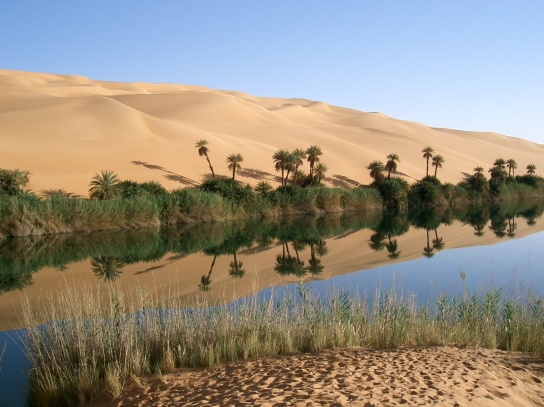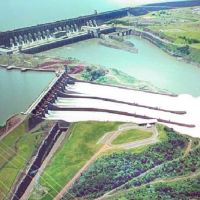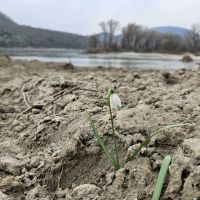Trouble in Paradise? The untold story of the oasis biodiversity crisis
Oases are remarkable places. In the middle of the barren, scorching desert they provide a refuge for life. But oasis ecosystems are coming under increasing pressures.
For centuries oases have provided a refuge not only for humans, but also for an under-appreciated diversity of biological life. Oases conjure up images of sanctuary and paradise in some of the most hostile environments on Earth. But there is trouble brewing in paradise. All over the world oasis ecosystems are under threat. Despite this, the plight of oases, and the people and numerous species that live there, remains largely untold.
Oases are unique freshwater ecosystems centred around a spring within an arid region. They contain a unique diversity and interaction of microbial, plant and animal life. While rich in biological life, oases have also proved to be fertile grounds for human settlement. Two-thirds of the population in the Sahara lives in oasis socio-ecosystems, for example.

Desert Oasis in Tunisia. Photo Courtesy: Wikimedia Commons
Although oases may seem isolated, their stability depends on interactions between nearby ecosystems and the local climate. In addition, oases play a key role in migratory bird routes and as a refuge for vulnerable and endangered species. Human oasis settlements are also highly connected through trade routes. Instead of isolation then, oases are perhaps better characterised by interactions.
These interactions also make oases vulnerable to anthropogenic changes. Climate change, invasive species and problems associated with intensified land and water use, such as desertification, salinisation, and decrease in water resources are all placing increased pressures on oasis socio-ecosystems.
One current example is the Cuatro Ciengas basin in the Chihuahuan desert in Mexico which is a network of springs and streams high in biodiversity and supports over 70 endemic species (PNAS, vol. 103, p 6565). But intensified agricultural practices, related water consumption in the region and the looming threat of climate change have placed new pressures on this oasis ecosystem. The basin may already have experienced the extinction of several endemic fish and snail species.
Interestingly, the basin may also provide a link to the deep past. The abundant stromatolites and diverse microbial organisms that are present are closely related to marine taxa, even though they have been separate for tens of millions of years! Dr. Souza, one of the researchers working to protect the area, hopes that studying these organisms “may provide a hint on how the planet endured climate catastrophes in the past and perhaps help us understand how to deal with climate change.”

Huacachina Oasis, Peru
But it’s not just natural heritage we stand to lose. At oases cultural and ecological heritage are often intricately linked. The degradation of oases not only causes socio-economic problems for communities reliant on the healthy functioning of these socio-ecosystems, but is leading to rural abandonment and the loss of traditional knowledge.
The preservation of oasis ecosystems was identified as an emerging issue during the IUCN World Conservation Congress in September 2012. This is a promising step in the right direction, but more attention must be given to this issue if conservation efforts are to be successful. If we fail to protect these incredible places, we face losing not only places of significant biodiversity and traces of an ancient past, but a unique piece of human culture.
References:
Association Marocaine pour l’Ecotourisme et la Protection de la Nature, Morocco 2012, ‘Motion 84 to the IUCN Congress: Preservation of Oasis Ecosystems‘, IUCN.
Belluscio A 2011, ‘Mexico’s biodiversity oasis faces destruction‘, Nature News.
IUCN 2011, ‘Improving oasis governance in Tunisia‘.
IUCN 2012, ‘Oases‘.
Souza et al. 2006, ‘An endangered oasis of aquatic microbial biodiversity in the Chihuahuan desert‘, PNAS, vol. 103, no. 17, pp. 6565-6570.
Will Bibby is currently completing a Masters (MPhil) in Geography and the Environment at the University of Oxford.















